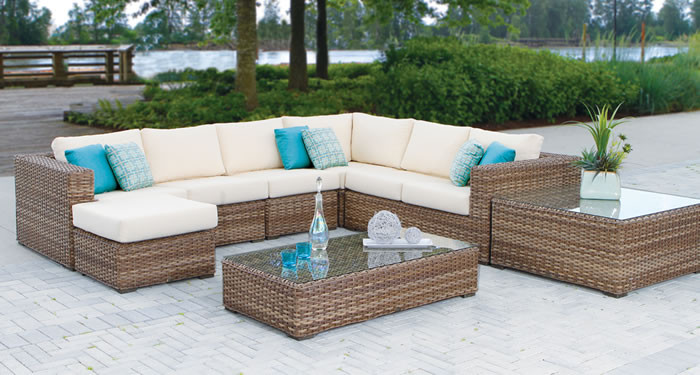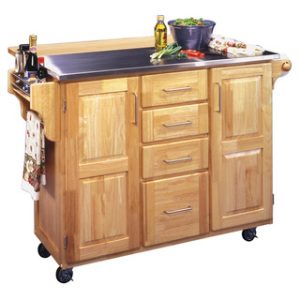Super Tips For Planning Your Wedding
There’s definitely nothing wrong with seeking a little bit of inspiration for your upcoming wedding. With so much on your mind, it can be very difficult to focus on the many details you need to be focusing on. Use the tips in this article to help provide that creative spark for your wedding.
On the days leading up to your wedding, make sure that your future husband or wife is feeling okay. You will be their biggest supporter and someone to whom they can turn. Reassurance will make them feel great and more comfortable about this huge decision in his/her life. Tell them a few motivational words to help them cope with their stress.
When planning an outdoor wedding, always have a backup plan. Try choosing a venue that has an indoor area available for your wedding if it decides to rain that day. You could also consider having tents just in case you experience bad weather. When using a tent during rain, it is not ideal for when you have heavy rain as the ground beneath the tent will become wet and your guests will have to walk in it.
Before you leave for your wedding, make sure that you have a solid breakfast that is filled with a lot of carbs. Typically, you will not eat until later on in the day and will be under a lot of stress, which can drain your energy very fast. A proper meal will combat a haggard feeling.
When planning your wedding, try picking out a theme for your big day. When you have a wedding theme, you will be focused on what you need for that theme. It can make your wedding decisions a bit easier since you know what theme you are going with. Having a theme can also make your wedding more memorable.
If you are charging to photograph a wedding, make sure that all expectations are set before the big day. Find out what the couple are expecting to get at the end and what the cost will be. If you’re offering your services for free, then it’s just as important to find out what end product you’re being expected to deliver, and what it will cost you.
An important component to your wedding is the invitations that you send out to your guests. Make sure that you make these as elegant as possible, as you want the invitations to represent how people see you and your future husband. Quality invitations will help to garner respect for your wedding.
Don’t get drunk! If you don’t want your guests getting inebriated and making a scene, then you don’t want to behave like that either. Keep your alcohol intake to a minimum so you can actually remember the night you had for the rest of your life and not end up on the nightly news.
Adding items to your wedding gift registry can be very overwhelming, especially if you register at a large department store. Do not be afraid to make multiple appointments, rather than trying to build your entire registry in a single day. This approach keeps the process stress-free. Consider building your registry by household area. On one trip, choose kitchen items, then bathroom goods, then items for the bedroom and so on.
When trying to pare down the guest list, consider who is paying for the wedding, and then allocate them more seats. If the bride’s father is footing the bill, then her side of the family should be permitted to attend. If the couple is paying for the wedding themselves, then they should split the number of attendees in half for each side.
If you’re going to give a multiple course meal to your guests, they need to be entertained until it comes out with small appetizers like sweets on the tables you have set up. You could consider sugared flower petals, sugar roses or maybe some bite size crackers to tide them over.
Reading up on advice to plan a wedding is nothing new. Wedding-specific magazines are huge sellers on the market, and some people make great careers as wedding planners. The truth is that everyone who hires a corporate event planning for a wedding is seeking some type of advice. So, don’t be shy about using the tips you’ve just learned here. Source
7 Ways to Protect Your Outdoor Furniture
 Your casual outdoor furniture does more than just look good, it’s practically your whole summer life out of doors! With so many reasons to take good care of it, where do you begin? Here are seven important ways to take good care of your casual outdoor furniture, to make sure it lasts for you and your family, season after season.
Your casual outdoor furniture does more than just look good, it’s practically your whole summer life out of doors! With so many reasons to take good care of it, where do you begin? Here are seven important ways to take good care of your casual outdoor furniture, to make sure it lasts for you and your family, season after season.
- Add A Coat of Paint
Some specialty paints have serious UV filters, meaning your furniture will be protected from sun-fading. Adding paint can be a great way to customize the look of your furniture, too. Be sure to select an appropriate paint for the material you’re covering and the outdoor elements.
- Try an Outdoor Varnish
A clear varnish will protect your set, but isn’t likely to alter the original color. This can be the most favorable option for many, when you don’t want to change the appearance of what you bought. It’s also easy to use a varnish to touch-up areas of the furniture that may see the most wear, such as arm rests and the area of the legs closest to the ground.
- Finish with A Water Sealant
Water sealant is always a good idea, but particularly if you live in an area that has a heavy rain season. The sealant will keep the water out, for the most part, allowing the furniture to last longer and look better in the process.
- Situate The Furniture in The Right Location
If your casual outdoor furniture is set out in the glaring sun, it may succumb to fading much faster, even with a protective coating on it. Therefore, you’ll want to keep it somewhere the sun isn’t shining on it all day long. Also, consider things like sap that may fall from the trees, marring the furniture or necessitating extra cleaning jobs for you.
- Take Your Climate into Consideration Before Buying Casual Outdoor Furniture
Some sets are made for a particular climate, so it’s important to research your materials or speak with a sales person first. Also, if you live in a more arid climate, you’re not necessarily going to need a water sealant; thus, it’s important to consider all factors as you make your decision and take steps to care for the furniture after buying it.
- Cover The Pieces to Protect Them
Your outdoor pieces will last much longer and look much better, too, if you can keep them covered when not in use. There are many stylish options to choose from, so don’t automatically think covering will look drab or even unappealing.
- Clean After Major Events
Keeping your furniture cleaned up will also help it hold its gorgeous look for longer, so be quick to spiff up after parties or drips and spills. Outdoor fabrics need special care, but can often handle stronger cleaning methods than their indoor counterparts. Just read the labels and keep up with stains. Also, be careful not to allow water to sit anywhere on the cushions, such as in cracks where buttons and seems are sewn; standing water may lead to mold stains, which can be tough to remove after a while.
Don’t take chances with your casual outdoor furniture – take good care of it. You want it to look as good in a few years from now as it did when you first bought it and you want to be able to enjoy it for as long as possible. If only summertime lasted as long as your well-made outdoor furniture!
Why Is Website Maintenance Important
 Website maintenance is quite important in any business, regardless of its size. A website is considered a worldwide window in one’s business and it normally has such a big impact on how the value of products and services are perceived. A well-maintained website often has a critical impact on real-time service industries. There are various reasons that make website maintenance important including;
Website maintenance is quite important in any business, regardless of its size. A website is considered a worldwide window in one’s business and it normally has such a big impact on how the value of products and services are perceived. A well-maintained website often has a critical impact on real-time service industries. There are various reasons that make website maintenance important including;
Customer Interest
A well-maintained website regularly attracts new customers while maintaining interest levels of existing customers. It should be customer centered and consistently kept relevant by ensuring customer constant points are in good working condition and routinely refreshing its content. The website administrator should ensure that phone number listings are updated and price lists, products and services are correct and current.
Search Engines
Website maintenance is very critical to search-engine rankings. Most websites that contain old content normally rank lower in search engine listings. Various search engines including Google, check the website’s pages “if-modified-since” HTTP header so as to determine whether the site is worth crawling. Failing to make repetitive modifications could result to the website being pushed below active competitors in the listings and hence cost the owner business over time.
Corporate Image
One’s website is termed as a public reflection to their corporate image. A poorly maintained website containing errors, dead pages, outdated information and broken links projects a sloppy corporate image and can result to business decline over time. One should routinely examine the look and feel of his website and frequently update it to match its corporate image. Corrections on poor grammar, broken links and spelling mistakes should be done with immediate effect before customers get to notice.
Considerations
Website maintenance activities should cover major business-critical key areas. These include quality control, copy production, publishing, performance monitoring, feedback monitoring, infrastructure maintenance, change control, risk control and routine maintenance. For risk management, one should have a business-continuity plan for his or her website so as to ensure the hosting service provider has a maintenance and backup plan that is strictly in line with his own business service levels. These back up and maintenance is considered important when one has a mission-critical or real time website.
Updated Security Patches and Bug Fixes
Web maintenance is vitally important in terms of security. A website should be regularly updated with the latest bug fixes and security patches. These helps in restricting hackers who break into websites and upload viruses such as Trojan for use in their attack schemes. One of the major ways of hackers to gain access to a website is through an outdated software. Hackers will try to take advantage of websites with outdated software due to the availability of security patches. This results to visitors on the website being prone to viruses when downloading software from the website. Search engines such as Google automatically burn websites that contain malware.
Other important reasons for website maintenance include; keeping up with changing technology, Adding new products, solutions, services or features, maintaining Google rankings and keeping visitors interested. Homepage
Kitchen Islands Solve the Space Problems
 Even the largest kitchen can seem cramped if you don’t have the counter space that you need. Kitchen Islands are the way to solve the lack of counter space in your kitchen. Kitchen carts, portable islands, or kitchen islands have become remarkably popular over the past few years, simply by virtue of the fact that they help to add counter space to your kitchen.
Even the largest kitchen can seem cramped if you don’t have the counter space that you need. Kitchen Islands are the way to solve the lack of counter space in your kitchen. Kitchen carts, portable islands, or kitchen islands have become remarkably popular over the past few years, simply by virtue of the fact that they help to add counter space to your kitchen.
Typically located in the center of your kitchen, a John Boos kitchen island can be literally anywhere at all. They can work as a table for a fast meal, serve as a breakfast bar when you’re in a hurry and grabbing a fast bite, and are available to you in literally any style or topping that you might like.
The kitchen islands which are becoming most popular today are those which offer not only counter space, but also storage areas and a great counter top surface that permits you to chop, to cook, or to roll out a pie with equal ease and clean up quickly and easily. Some of the newer types of kitchen island are on wheels to easily put them where you want them, while others, usually those which are fitted out with power, are stationary.
The three most commonly purchased types of kitchen islands are the built in variety, the kitchen carts type, and the butcher block variety.
The more common type which is purchased today is the stationary kitchen island. These offer you a wide array of choices so far as the counter tops, ranging from a thick wood block to a granite top counter, or even stainless steel. The stationary variety gives you a great deal more leeway for customizing the product, for getting the power and other items that you may want, but do not, of course, move around the kitchen.
Kitchen Carts are also called a mobile island or mobile kitchen island. These come with wheels, offer you a place to work and then the means to push it out of the way once you’ve completed the job at hand, and place the kitchen island where you like. In spite of being on wheels, mobile kitchen islands today are very heavily built and are available with a wide array of counter tops to choose from.
A butcher block island is named for the very thick, very sturdy kind of topper that it has. The top of the butcher block island is normally made of special hardwoods. These islands also normally house places to hang cutlery and will usually offer storage space below, although not as much as a normal custom kitchen island that is built into your floor.
Your selection of the right kitchen island for your needs will depend of course, on what your needs are for the product, but rest assured that no matter what kind of space dilemma you’re trying to solve, there is a kitchen island out there that will give you a viable solution.
Art Prints – Lithography And Drypoint
The oldest form of mechanical reproduction is called printmaking which goes back in time to about the 5th century. With this form of reproduction, the artist can send out many copies of his art, identical or otherwise. This article talks about five different types of art prints the techniques used to make them, and their artistic results.
The oldest form of printmaking is the woodcut. Originally, these art prints were created when an artist drew a sketch on a block of wood, and then cut away all parts of the wood that were not to be inked. Ink was then rolled onto the block of wood, sticking to it only on the raised sections of the drawing. After inking, the block could be pressed onto a sheet of paper to transfer the drawing.
Engraving is another form of printmaking. In contrast to woodcut, in engraving the block has depressed areas to which the ink clings. Copper is typically used for the metal block. Then a sketch is scraped onto the metal with special engraving tools. This process allows for many more copies to be produced than woodcut, since a metal plate is very durable.
An intriguing variant on engraving is drypoint. This method involves using a tool to scrape the sketch away, leaving a feathered edge to the block. Drypoint’s unique method of preparation results in a visual quality that no other printing process can match. However, since the feathered edges will be worn off of the plate with time, drypoints can only be made in small batches.
The process of lithography allows one to put a graphic on shale. The image is created with a fatty tool, then covered with hydrochloric acid. This freezes the image on the surface. If limestone is used as a canvas, this process can save nuances impossible with other printing methods.
The modern imaging process used in making giclee prints reproduces a digital scan onto paper. In this process high-quality colored ink is sprayed onto the page using jets and resulting in a rich array of varying shades of color as well as breathtaking detail. Landscapes and flower paintings are among the most popular of the reasonably-priced giclee prints available at fine art print shops.
This article talks about five different types of art prints the techniques used to make them, and their artistic results. Engraving is another form of printmaking. In contrast to woodcut, in engraving the block has depressed areas to which the ink clings. In lithography, a sketch is drawn on a block of limestone. Using a greasy drawing medium, followed by the application of an acid, the drawing is essentially “burned” onto the limestone. The lithography process captures fine details that other print processes cannot reproduce. Landscapes and flower paintings are among the most popular of the reasonably-priced giclee prints for sale at fine art print shops.
